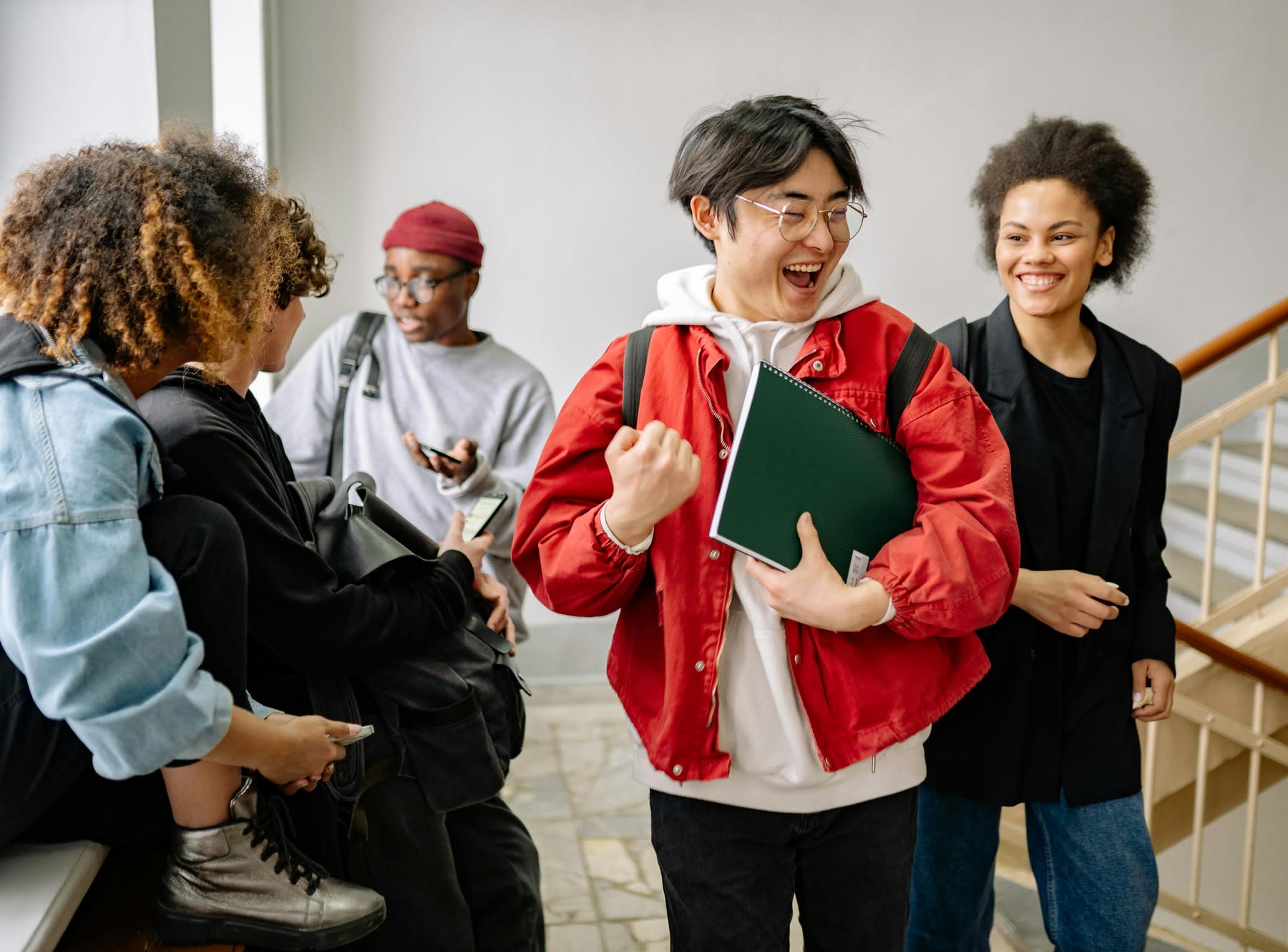What Financial Aid Is Available for International Students?

Key Takeaways
- While international students cannot take advantage of federal financial aid, they still have lots of options, including scholarships, grants, and loans.
- Grants are awarded based on financial need, while scholarships are given for academic achievements, extracurricular activities, chosen fields of study, and other factors.
- There are many universities that offer scholarships, grants, and assistantships specifically for international students, and numerous organizations and foundations that offer scholarships designed to support international education.
International students studying in the US pay more than domestic students for tuition, housing, books, and supplies. Despite the high expenses and currency exchange rates, there are ways to reduce general costs. If you’re wondering what financial aid is available for international students, this article will offer some clarity.

What Financial Aid Is Available for International Students?
While funding opportunities for international students in the US may be lesser compared to aid options for US nationals, there are still plenty of options, such as scholarships, grants, and loans that foreign students can take advantage of.
Financial aid is vital for foreign students who seek education abroad. With the rising costs of education globally and the differences in currencies, securing financial help has become important to fund studies in a foreign country.
Unlike domestic students, foreign students are typically not eligible for federal or state aid. They usually use personal funds and other financial resources to pay for their tuition and expenses. Let’s dig deeper to explore the different types of financial aid you can leverage as an international student.
Back to TopTypes of Financial Aid for International Students
International students often have to pay more tuition fees to study in America. Financial aid can help you bridge the economic gap and continue your studies without having to worry about expenses. From scholarships to private loans, listed below are some financial aid options for foreign students wanting to study in the US:
Scholarships and Grants
Scholarships and grants are the best ways to fund your higher education. They help you minimize the cost of the university by hundreds, even thousands of dollars. You can find several grants and scholarships offered by:
- Colleges and Universities
- Non-profit groups
- Private organizations
- Government agencies
For instance, the Fulbright Foreign Student Program helps graduate students and young professionals study and do research in the US. MPOWER also offers many scholarships for students worldwide. Unlike a student loan, you won’t have to repay scholarships or grants. The requirements vary for each application. To qualify, you have to:
- Find a scholarship/grant that matches your profile
- Fill out the application with the needed information
Federal Student Aid or FAFSA
As a foreign student in America, you can also get federal student aid. However, you have to meet specific residency criteria. Some non-US citizens who can apply for FAFSA include:
- US Nationals and Permanent Residents: People with a green card or those from American Samoa or Swains Island can apply.
- Certain I-94 Record Holders: If your I-94 record says asylum granted, refugee, Cuban-Haitian entrant, or conditional entrant, you can get federal aid. Some parolee designations are also eligible.
- T-Visa Holders: Victims of human trafficking or children of a parent with T-1 status can apply.
- Battered Immigrant-Qualified Aliens: Non-citizens, including their children, who are victims of abuse by a US citizen or permanent resident spouse, can receive aid.
- Citizens Of Specific Territories: Students from the Federated States of Micronesia, the Republic of the Marshall Islands, or the Republic of Palau can get some federal student aid.
Private Student Loans
Paying for college can be tough, even with scholarships, grants, or savings. That’s why many students turn to loans to cover costs. There are two main types of loans: Federal loans from the US government and private loans from companies. International learners can only qualify for private loans.
To secure a loan, you need a cosigner who is a US citizen or permanent resident. This is because students often have little income and no credit history. A co-signer is usually a family member, friend, spouse, or another adult with good credit who shares the responsibility of repaying the loan.
However, some lenders, such as MPOWER, provide student loans for non-nationals without requiring a co-signer.

Work-Study Programs
Although you may not qualify as an international student for the Federal Work-Study Program, you can earn money in college by working on-campus (or off-campus after the first year).
Make sure you seek a job that aligns with your studies and follows USCIS rules for M-1 and F-1 visas. The money you earn can help pay for tuition, housing, and other expenses while living in the US.
Also, it’s best to check your university’s website for similar programs and make sure your visa allows you to work.
Back to Top7 Popular Financial Aid Options for International Students
As an international student, you may be eligible for different types of financial aid that can alleviate the financial challenges of higher education in the US.
Listed below are some popular financial aid options such as scholarships, grants, fellowships, and loans for foreign students and the required criteria to receive them.
Fulbright Foreign Student Program
Administered by binational Fulbright Commissions/Foundations or US Embassies, the Fulbright Foreign Student Program helps young professionals, graduate students, and artists from over 160 countries study and do research in America.
Every year, about 4,000 students get Fulbright scholarships. Plus, the program selection and eligibility rules vary by country. To qualify, you must:
- Live in the country nominating you when you apply.
- Have a bachelor’s degree (or equivalent) with good grades by the program’s start date.
- Be fluent in English, shown by recent test scores of at least 550 (Paper-Based TOEFL), 79-80 (Internet-Based TOEFL), or 6.5 (IELTS).
- Not have US citizenship or dual citizenship.
American Association of University Women International Fellowships
This fellowship program is for women who want to pursue postdoctoral or full-time graduate study in America yet are not permanent residents or US citizens.
If you apply for a master’s or first professional degree, you can receive up to $20,000. You can get $25,000 for a doctoral degree, while postdoctoral students can get $50,000.
To qualify for an International Fellowship, you must:
- Be a citizen of a country other than the US or have a nonimmigrant visa if living in the US. You can’t be a US citizen, permanent resident, or dual citizen.
- Have a degree equal to a US bachelor’s degree by the application deadline.
- Plan to study full-time during the fellowship year.
- Plan to return to your home country to work after finishing your studies.
Margaret McNamara Education Grants US-Canada Program
MMEG gives education grants to outstanding women from developing countries who are full-time students in accredited universities in the US and Canada. These women must show financial need and be dedicated to helping women and children.

You can be enrolled in a degree or certificate program. To apply, you must:
- Be a woman and 25 years old by the application deadline.
- Be from a country on the MMEG eligibility list (barring the Trinity Washington University Program).
- Be enrolled at an accredited (in-person) academic program and institution when applying.
- Plan to be enrolled for a minimum of one full semester after receiving the grant.
- Graduate within three years once you get the grant.
- Be unrelated to IMF, Inter-American Development Bank, or World Bank Group staff, retirees, or MMEG Board members.
MPower Financing Global Citizen Scholarship
This scholarship helps refugees, DACA (Deferred Action for Childhood Arrivals), and foreign students who want to study in the US and Canada. The fund offers one $10,000 scholarship and two $2,000 scholarships.
To qualify, you must be enrolled or accepted in a full-time degree program at an MPOWER-supported school and allowed to study in the US or Canada.
You can use the scholarship award for anything you need for school, such as books, living costs, or tuition. Eligibility criteria vary; however, you may require:
- A valid study visa
- DACA protection
- A green card
Sallie Mae
Sallie Mae is a popular option for private student loans. They offer loan options from $1,000 up to the full cost of attendance. You can qualify for a loan even if you attend school less than part-time, which not every lender allows.
If you have a cosigner, you can apply for a release after making one year of on-time payments. Loans are usually paid off in 10-15 years, and you can get a 0.25% discount for using autopay. Sallie Mae offers limited forbearance periods for international students who are unable to make payments.
- Loan terms: Up to 15 years
- Loan amounts: $1,000 to 100% of the school-certified cost of attendance; no limit for graduate students.
- Eligibility: Foreign students can apply with a US citizen co-signer. Loans are available for full-time, part-time, or less than part-time students.
- Forbearance options: Up to 12 months during the loan term. Interest-only payments for one year once you leave school.
- Co-signer release: Available after 12 consecutive monthly payments.
Citizens Bank
Citizens Bank also provides various loan options for undergraduate and graduate students. Parents or guardians can also get loans to fund their child’s education. Apart from traditional loans, there are special loans for business, medical, and law school students.
You can borrow up to $350,000 and repay the loan over five, ten, or fifteen years. The annual percentage rate starts at 3.23%. Students can apply to release their co-signer after three years of on-time payments.
- Loan terms: 5, 10, or 15 years
- Loan amounts: $1,000 - $350,000 (based on degree)
- Eligibility: Foreign students are required to have a valid student visa and can apply with a US citizen co-signer
- Forbearance options: Up to 12 months, provided in two-month increments
- Co-signer release: Available after 36 on-time payments
Earnest
Earnest is another private student loan provider that helps foreign students fund higher education. It takes a more comprehensive approach to assessing borrowers, including credit scores and earning potential.
They offer five to twenty-year loan terms with customizable and flexible payments. You can even skip one payment each year.
This private loan helps you pay off your debt easily and is good for those with a clean repayment history.
- Loan terms: Five, seven, ten, twelve, or fifteen years.
- Loan amounts: $1,000 up to the total attendance cost (no general limit).
- Eligibility: Students must attend college at least part-time. International students need a US citizen co-signer.
- Forbearance options: Up to 12 months during the loan term.
- Co-signer release policy: None
Top US Colleges That Provide Financial Aid to International Students
Many US colleges and universities provide generous financial aid for foreign students to help them with their academics. Here are some of the top institutions:
| Institution | State | Financial Aid Package |
|---|---|---|
| Wesleyan University | Connecticut | $83,185 |
| Wellesley College | Massachusetts | $82,892 |
| Haverford College | Pennsylvania | $79,770 |
| Duke University | North Carolina | $79,740 |
| Dartmouth College | New Hampshire | $79,007 |
| Williams College | Massachusetts | $78,624 |
| Vassar College | New York State | $77,644 |
| Cornell University | New York State | $76,179 |
Back to Top
How to Apply for Financial Aid as an International Student
International students may need to complete the FAFSA to apply for financial aid. However, other documents may be required by schools and aid programs, such as:

CSS Profile
This form reviews your finances, like your family’s income and expenses in your home country’s currency, to see if you qualify for certain scholarships.
International Student Financial Aid Application
The CollegeBoard offers another form, the ISFAA, similar to the FAFSA, for international students.
Some schools use this form to determine your aid eligibility. You’ll need to provide your and your parents’ financial data, plus any expected (or already secured) support.
Check with your school’s aid office first to understand their process for awarding financial aid. Programs, including eligibility requirements, can vary widely between schools and states.
Related Questions
Who Qualifies as a Foreign Student?
Foreign students study in the US temporarily on visas like the F-1. You’re not an international student if you have a green card or if you’re a US citizen with parents of different citizenship.
What Are the Chances of Getting Financial Aid for Foreign Students?
Many universities offer scholarships, grants, and assistantships specifically for international students. Additionally, numerous external scholarships from organizations and foundations are designed to support international education. Researching each institution’s financial aid policies and exploring external funding opportunities can significantly improve your chances of getting financial aid.
What Is the Difference Between Scholarships and Grants?
Typically, grants are awarded based on financial need, while scholarships are given for academic achievements, extracurricular activities, chosen fields of study, and other factors.
Conclusion
Getting financial aid as a foreign student in the US can be challenging, but there are many available options to help ease the financial burden of a higher education. These include scholarships, grants, loans, and work-study programs. Make sure you fill out the FAFSA, CSS, and ISFAA to up your chances of receiving financial assistance as an international student.